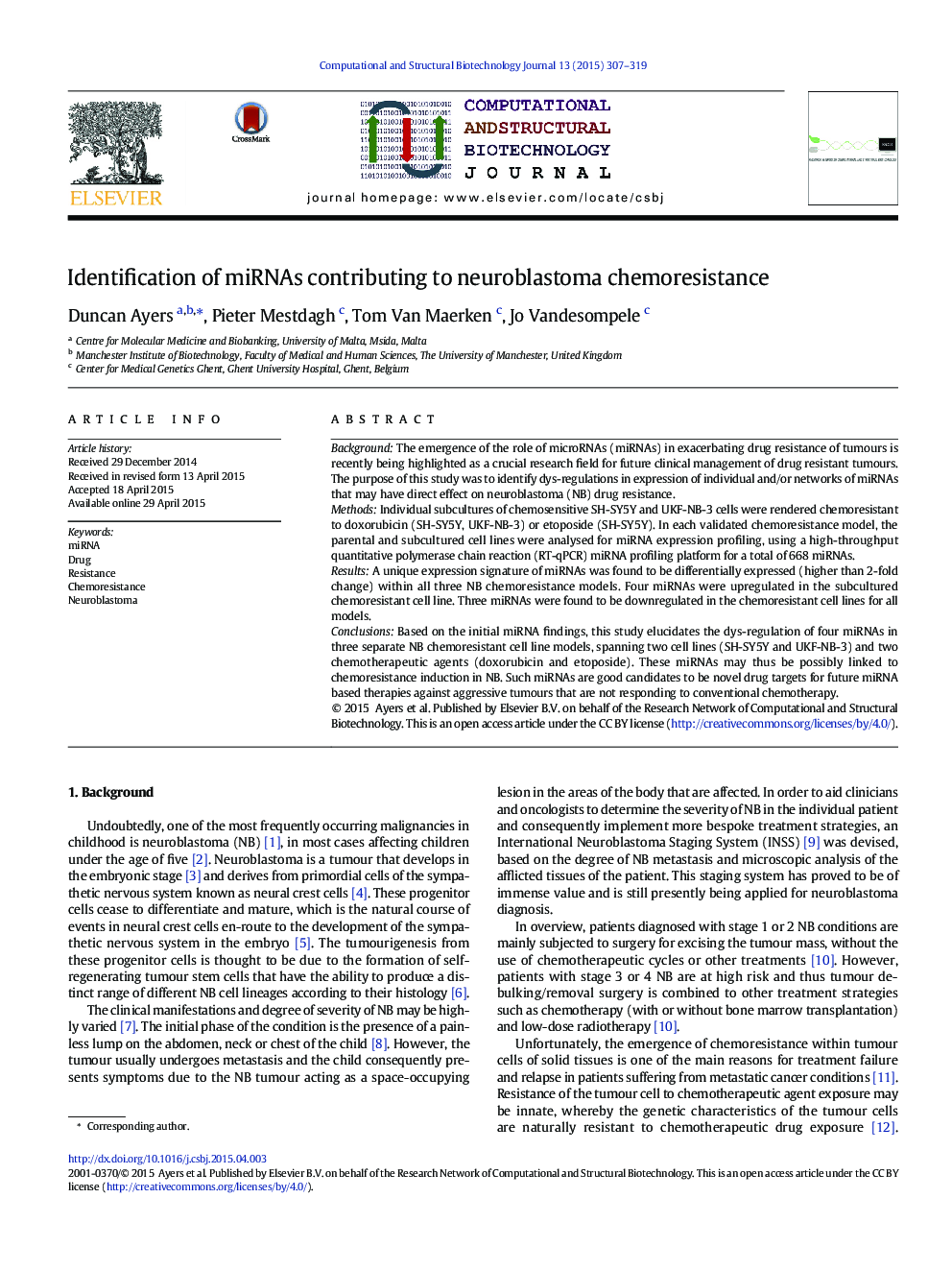| کد مقاله | کد نشریه | سال انتشار | مقاله انگلیسی | نسخه تمام متن |
|---|---|---|---|---|
| 2079150 | 1545072 | 2015 | 13 صفحه PDF | دانلود رایگان |

BackgroundThe emergence of the role of microRNAs (miRNAs) in exacerbating drug resistance of tumours is recently being highlighted as a crucial research field for future clinical management of drug resistant tumours. The purpose of this study was to identify dys-regulations in expression of individual and/or networks of miRNAs that may have direct effect on neuroblastoma (NB) drug resistance.MethodsIndividual subcultures of chemosensitive SH-SY5Y and UKF-NB-3 cells were rendered chemoresistant to doxorubicin (SH-SY5Y, UKF-NB-3) or etoposide (SH-SY5Y). In each validated chemoresistance model, the parental and subcultured cell lines were analysed for miRNA expression profiling, using a high-throughput quantitative polymerase chain reaction (RT-qPCR) miRNA profiling platform for a total of 668 miRNAs.ResultsA unique expression signature of miRNAs was found to be differentially expressed (higher than 2-fold change) within all three NB chemoresistance models. Four miRNAs were upregulated in the subcultured chemoresistant cell line. Three miRNAs were found to be downregulated in the chemoresistant cell lines for all models.ConclusionsBased on the initial miRNA findings, this study elucidates the dys-regulation of four miRNAs in three separate NB chemoresistant cell line models, spanning two cell lines (SH-SY5Y and UKF-NB-3) and two chemotherapeutic agents (doxorubicin and etoposide). These miRNAs may thus be possibly linked to chemoresistance induction in NB. Such miRNAs are good candidates to be novel drug targets for future miRNA based therapies against aggressive tumours that are not responding to conventional chemotherapy.
Journal: Computational and Structural Biotechnology Journal - Volume 13, 2015, Pages 307–319